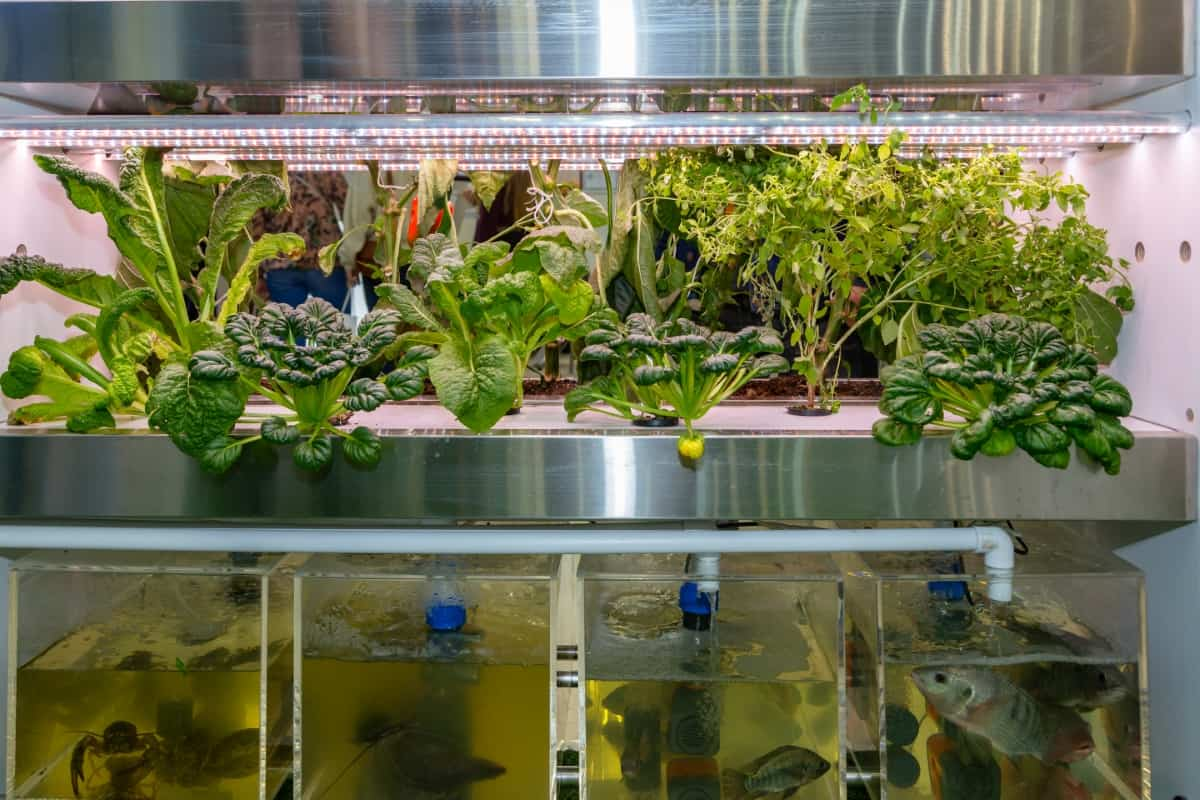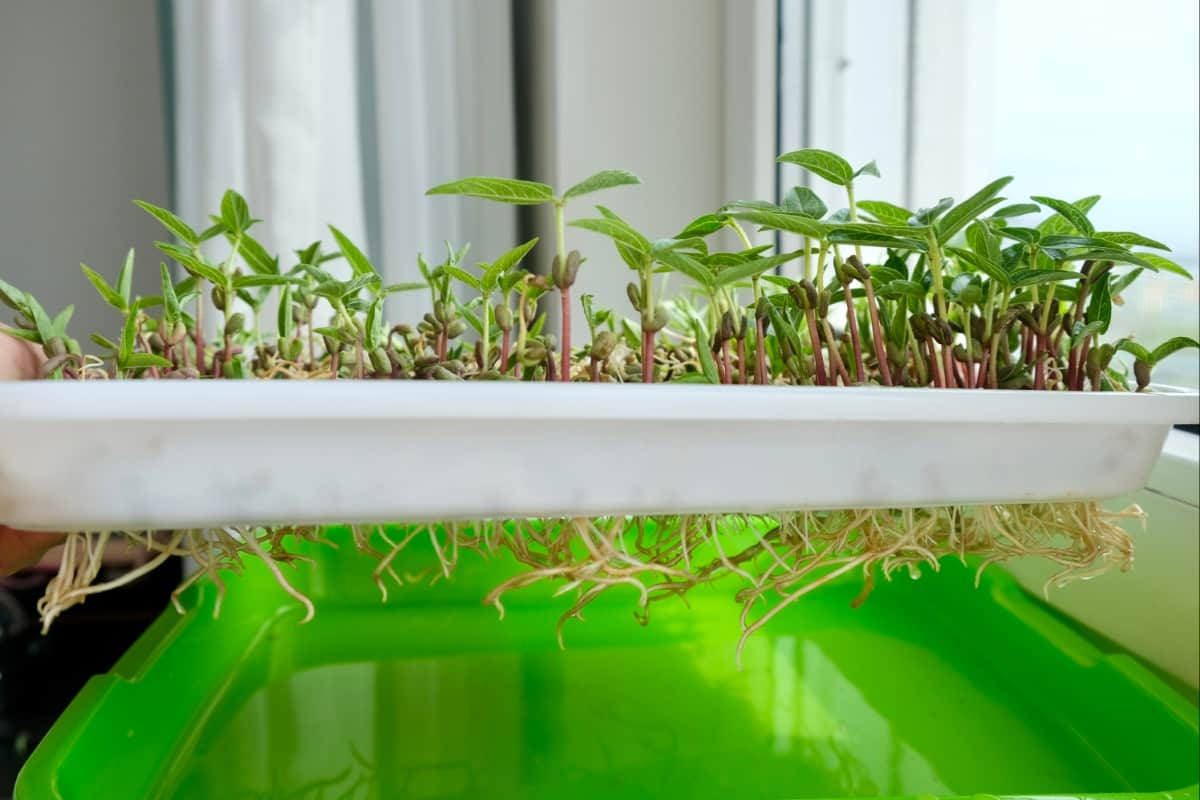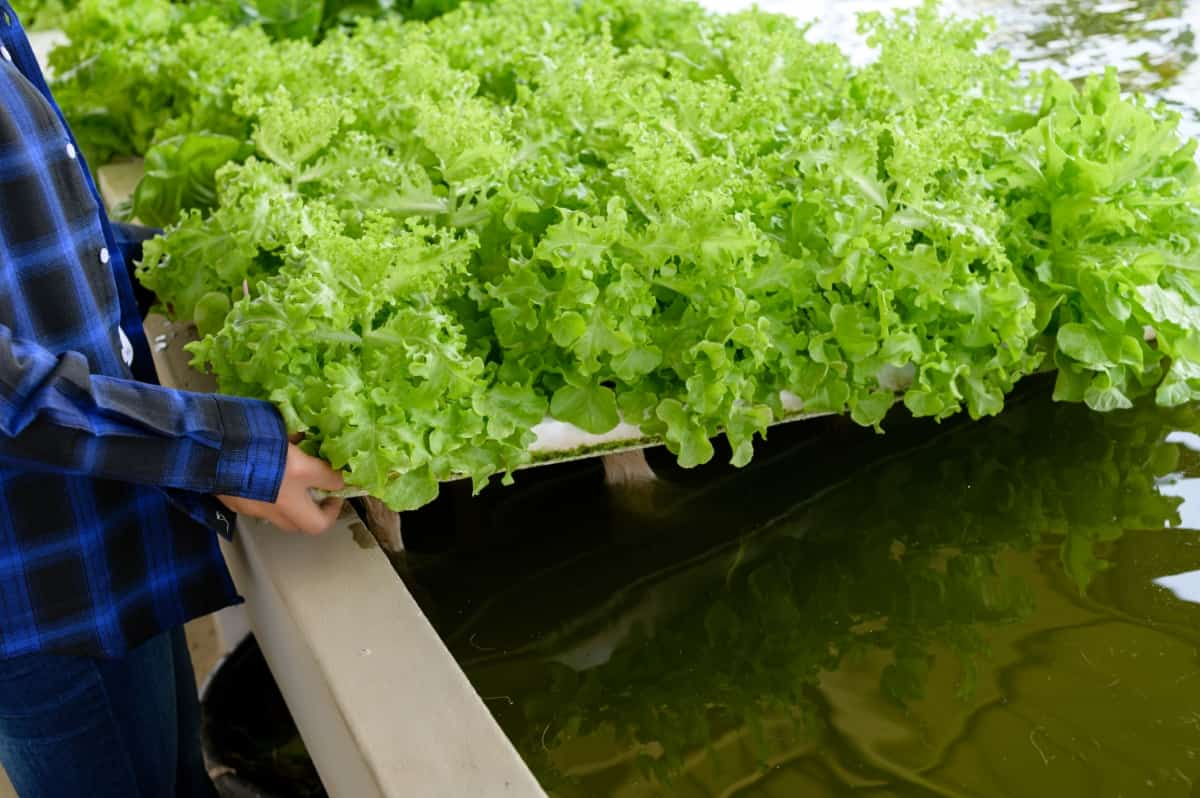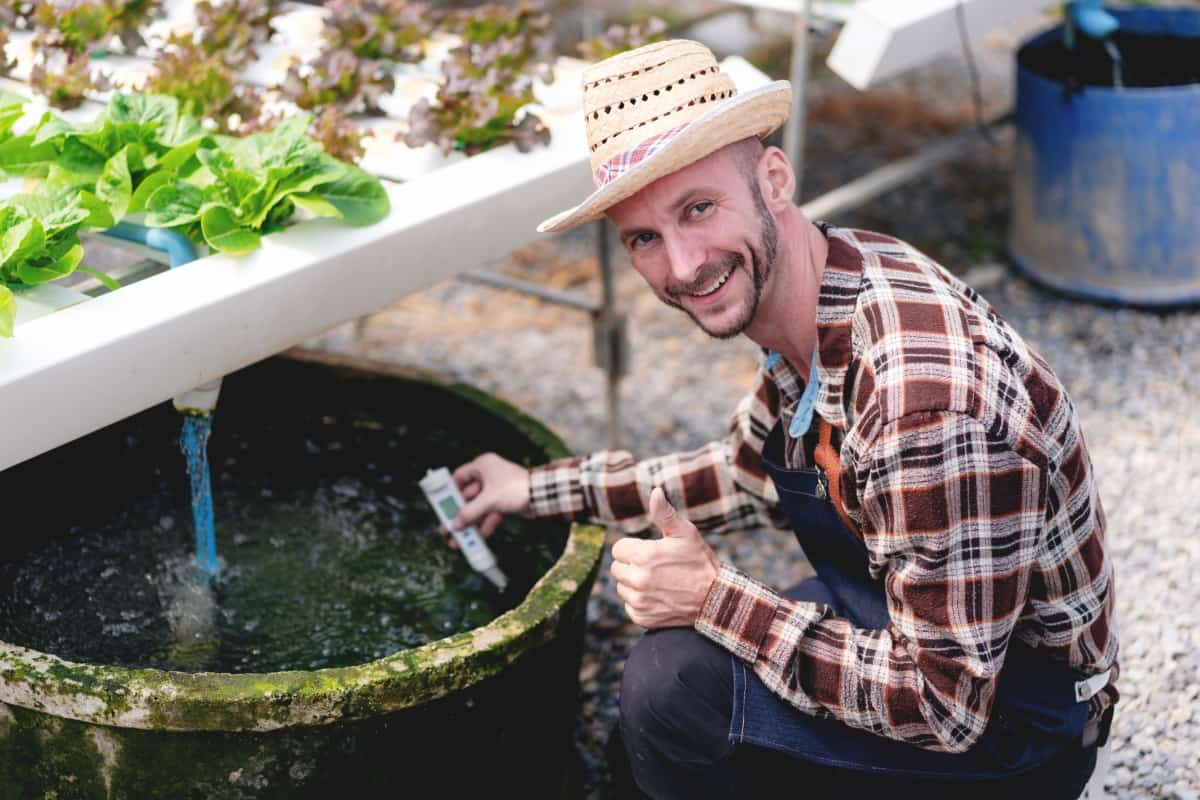In simple terms, this refers to the nourishing blend that provides essential nutrients for your plants in an aquaponics system. Unlike traditional soil-based gardening, where nutrients are absorbed from the soil, aquaponics utilizes a unique symbiotic relationship between fish and plants. The fish waste serves as a natural plant fertilizer, while the plants filter and purify water for the fish. However, this process alone may not provide all necessary nutrients at optimal levels for plant growth.

Aquaponic Nutrient Solution Recipe
Essential Nutrients for Aquaponics
To achieve optimal plant growth and health in an aquaponic system, it is crucial to provide the necessary nutrients that plants require. These essential nutrients can be divided into two categories: macronutrients and micronutrients.
Macronutrients are essential in larger quantities by plants and include nitrogen (N), phosphorus (P), potassium (K), calcium (Ca), magnesium (Mg), and sulfur (S). These macronutrients play a vital role in various physiological processes like photosynthesis, cell division, and overall plant development.
Micronutrients, alternatively, are required in smaller amounts but are equally important for healthy plant growth. Micronutrients include iron (Fe), manganese (Mn), zinc (Zn), copper (Cu), molybdenum (Mo) and boron(B). It’s essential to maintain proper nutrient levels within your aquaponic system to ensure that plants receive all the necessary elements for their growth.
Understanding Aquaponic Nutrient Requirements
To have a successful aquaponics system, it’s crucial to understand the plant nutrients. Different aquaponic plants require different levels of nutrients to thrive, and it’s important to provide them with the right balance. To ensure your aquaponic system provides these nutrients adequately, you can monitor the water quality regularly using testing kits or meters. This will help you maintain optimal nutrient levels based on the requirements of your crops. Additionally, keep an eye on pH levels as they greatly influence nutrient availability for plants.
Homemade Nutrient Solution Components
By using readily available ingredients, you can ensure that your aquaponic plants receive the essential nutrients they need to thrive. The main component of a homemade nutrient solution is fish waste. In an aquaponics system, fish waste serves as a valuable nitrogen source for your plants. Through the process of mineralization, bacteria convert this waste into nitrites and nitrates that plant roots can absorb.
Another important ingredient is potassium hydroxide or potassium carbonate. These compounds help regulate pH levels in the water by neutralizing any acidity caused by fish waste breakdown. Maintaining proper pH balance ensures optimal nutrient uptake by plants. Calcium and magnesium are also essential components in a homemade nutrient solution.
Balancing pH Levels
Maintaining proper pH levels is crucial in aquaponics for optimal plant and fish health. In aquaponics, a slightly acidic to neutral pH range of 6.0-7.0 is ideal. Maintaining pH levels in aquaponics is crucial for the fish and plant health. To balance pH levels effectively, you need to monitor it regularly using a reliable testing kit. If the pH deviates from the desired range, adjustments must be made promptly.
In case you missed it: How to Convert Pond Toxins to Useful Nutrients Through Biofloc Technology

There are several ways to adjust the pH level in aquaponics if it’s too high or too low. Adding baking soda (sodium bicarbonate) can raise acidity, while adding vinegar or citric acid can lower it gradually. Remember that sudden changes in pH levels can shock aquatic organisms and harm their health. It’s best to make gradual adjustments over time until you reach the desired range.
Creating a Balanced Nutrient Solution
Achieving a balanced aquaponic nutrient solution formulation for beginners is crucial for the success of your aquaponic system. Different plants have different needs when it comes to essential nutrients, such as N, P, and K. To create a balanced nutrient solution at home, you can combine various organic ingredients like seaweed extract (a great source of micronutrients), compost tea (which provides beneficial microbes), and bone meal or rock phosphate (rich in phosphorus).
Mixing techniques play an important role too. Ensure proper dilution ratios and mix thoroughly to distribute nutrients evenly throughout the water column. Regular testing is important to ensure that your nutrient levels remain within acceptable ranges for both plant growth and fish health.
DIY Nutrient Solution Recipes
By making your DIY fertilizer for aquaponics, you have full control over the ingredients and can customize it to meet the specific needs of your plants. One popular recipe involves combining fish waste, such as uneaten food or feces, with water to create a nutrient-rich solution. This method utilizes the natural waste produced by the fish in your aquaponic system, providing essential nutrients for plant growth. Another DIY option is compost tea.
Made from organic materials like worm castings or composted vegetable matter, this nutrient-rich concoction is brewed by steeping the material in water for several days. The resulting liquid contains beneficial microorganisms that promote healthy root development and overall plant vitality. If you prefer a more traditional approach, some recipes utilize common household items like banana peels or eggshells. These natural sources of potassium and calcium can be crushed and dissolved in water to create a simple yet effective nutrient solution for your plants.
Nutrient Solution Mixing Techniques
The main technique is known as the “batch mixing” method. This involves measuring out the appropriate quantities of each component, such as fish waste or organic matter, and adding them to a container filled with water. The components are then mixed thoroughly until they dissolve or blend.
Another technique is called “continuous mixing.” In this method, you add the individual components directly into your aquaponics system on an ongoing basis. Some growers also opt for “teas” or infusions made from organic materials like compost or worm castings. These teas are brewed by steeping the material in water for a certain period before being added to the aquaponics system.
Testing and Adjusting Nutrient Levels
One way to test the nutrient levels in aquaponics is by using water testing kits specifically designed for aquaponics. These kits typically measure pH, ammonia, nitrite, and nitrate levels in the water. Testing should be done at least once a week to identify any imbalances or deficiencies. If your tests reveal high ammonia or nitrite levels, it indicates an imbalance in your system’s nitrogen cycling process.
In case you missed it: 10 Best Tips to Avoid Nutrient Deficiency in Garden Plants

This imbalance can be modified by increasing the number of beneficial bacteria that convert these compounds into nitrates. Adding more grow beds or media with surface area can help promote bacterial growth. On the other hand, low nitrate levels may indicate a lack of nutrients for plant uptake. In this case, additional fish food or supplements rich in essential nutrients like potassium and iron can be added to replenish the nutrient content in the system.
Organic Options for Nutrient Solutions
One popular organic option is using fish emulsion as a nutrient source. Made from decomposed fish waste, this liquid fertilizer provides essential nutrients like nitrogen, phosphorus, and potassium in an easily absorbable form. It can be diluted with water and added directly to the aquaponic system. Another organic choice is seaweed extract, which contains a wide range of trace minerals that plants need for optimal growth.
This natural product stimulates root development, improves nutrient uptake, and enhances overall plant health. Compost tea is also gaining popularity among aquaponics enthusiasts as an organic alternative. These blends typically combine various ingredients such as bone meal, blood meal, kelp meal, and rock phosphate to provide a balanced mix of nutrients necessary for healthy plant growth.
In case you missed it: Aquaponics in Urban Apartment Gardening: Benefits and How to Setup Guide

Conclusion
The aquaponic nutrient solution is a vital component of any successful aquaponics system. It serves as the lifeblood for your plants, providing them with nutrients necessary for their growth and development. The use of a nutrient solution ensures that your aquaponic plants receive the nutrients they need to thrive. This means healthier plants, which in turn leads to higher yields and more bountiful harvests.
- Feed Your Flock for Less: Top 10 Tips to Save on Chicken Feed
- Ultimate Guide to Ossabaw Island Hog: Breeding, Raising, Diet, and Care
- Hatching Answers: The Top 10 Reasons Your Chickens Aren’t Laying Eggs
- Eggs and Economics: Breaking Down the Cost of Raising Backyard Chickens
- Defend Your Greens: Proven Methods to Keep Iguanas Out of Your Garden
- Ultimate Guide to Cinnamon Queen Chicken: A Comprehensive Guide for Beginners
- Ultimate Guide to California Tan Chicken: Breeding, Raising, Diet, Egg-Production and Care
- Ultimate Guide to Marsh Daisy Chicken: Breeding, Raising, Diet, and Care
- 10 Types of Chicken Farming Businesses You Can Start for Profits